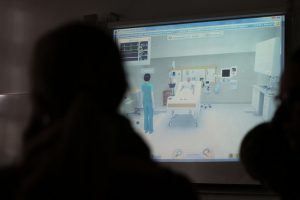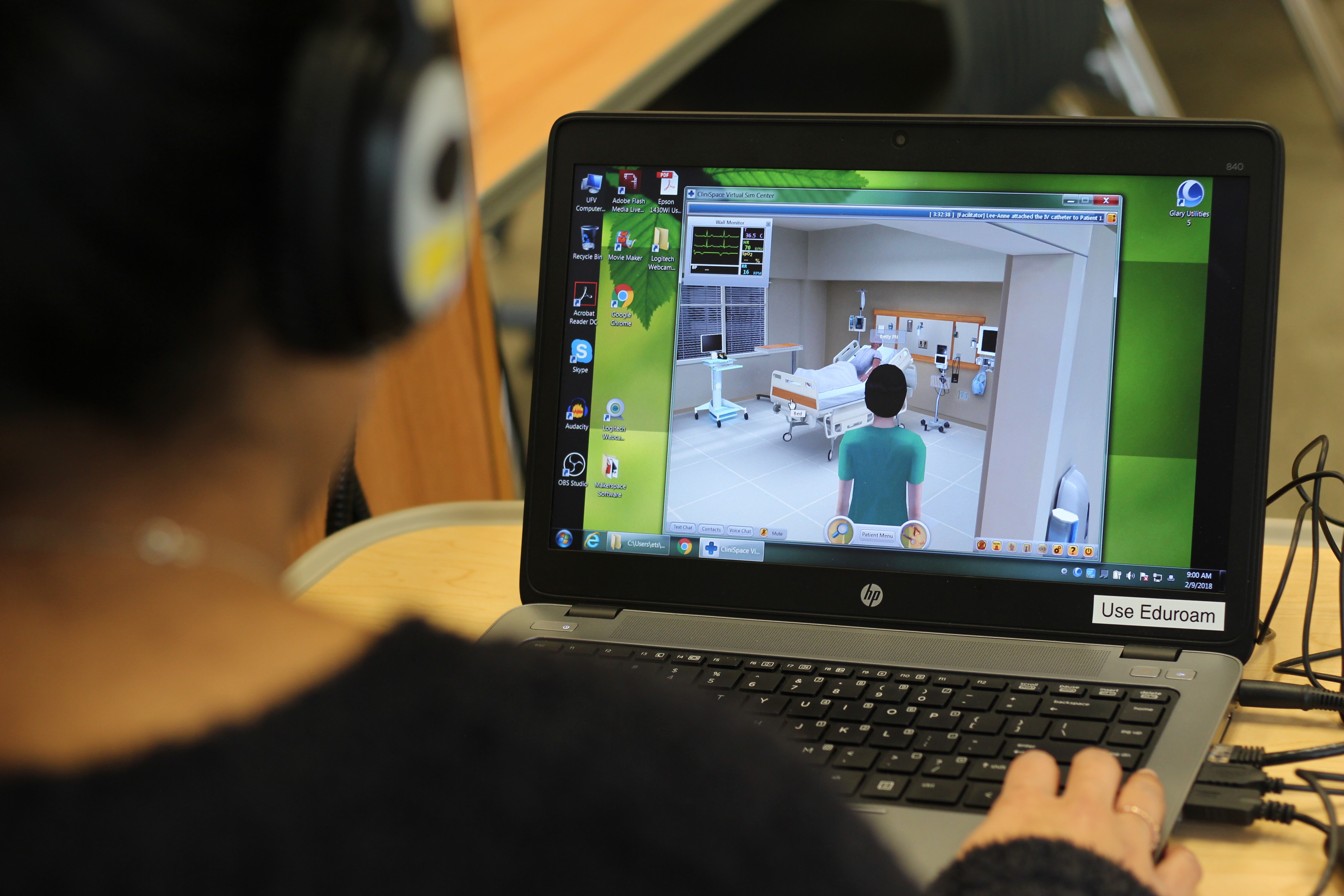As part of a larger research project on interprofessional skills for nursing education, Nursing faculty members Lee-Anne Stephen, Dawna Williams and Pam Causton from the University of the Fraser Valley School of Health Studies are testing out virtual software in the classroom.
The purchase of the subscription to Clinispace software was supported by the UFV Fund for Innovative Teaching. This fund aids faculty as they develop and deliver innovative learning experiences for students.
A first for UFV Health Sciences, students from the Bachelor of Science in Nursing degree program, Practical Nursing and Health Care Assistant program collaborate in the virtual world to learn about patient care across the professional spectrum.
 Stephen notes that, “fostering opportunities for cross-disciplinary learning in an educational setting can demonstrate to students how valuable each member of the health care team is to the health and safety of the patient.” If health care practitioners do not understand the importance of communicating their findings to other team members, patient care can be compromised.
Stephen notes that, “fostering opportunities for cross-disciplinary learning in an educational setting can demonstrate to students how valuable each member of the health care team is to the health and safety of the patient.” If health care practitioners do not understand the importance of communicating their findings to other team members, patient care can be compromised.
Often challenged by stringent scheduling within each Nursing program, interprofessional competencies are introduced to students in siloes. It is optimal if students have a clear understanding of their own scope of practice when working with various practitioners in a hands-on, or virtual setting.
“We haven’t had this type of teaching session before. We’ve almost always taught in isolation,” noted Stephen. Integrating virtual learning allows faculty from each Nursing program to bring their students together to see if their understanding of professional teamwork, communication and role clarity is enriched.
The virtual simulation worked by organizing one student from each program to manually engage with an avatar in the virtual world, controlling the actions of the avatar, while the other students observed from a screen in a nearby classroom. Each student provided an assessment of the patient within the scope of their practice, and communicated virtually to provide care to the patient.
Stephen, Williams and Causton hope this type of learning will enable opportunities for interprofessional competency education by alleviating scheduling challenges in nursing education. Through virtual education, students will be able to collaborate in the virtual world from their own home despite the constrictions of tight scheduling or long classroom and clinical hours.

As part of their research project, Stephen, Williams and Causton had student’s complete pre-questionnaires focused on scope of practice and teamwork. Following the virtual experience, students completed a follow-up questionnaire to see if the teaching session improved their understanding of one another’s roles. The purpose of the research is to test teaching options for integrating cross-disciplinary collaboration into nursing education.
Stephen notes that virtual simulation may be “less anxiety provoking as often hands-on mannequin simulation labs can cause high anxiety for students.”
Researchers are currently in the data collection stage and hope their research can inform and improve teaching strategies for interprofessional competency education in health care.

